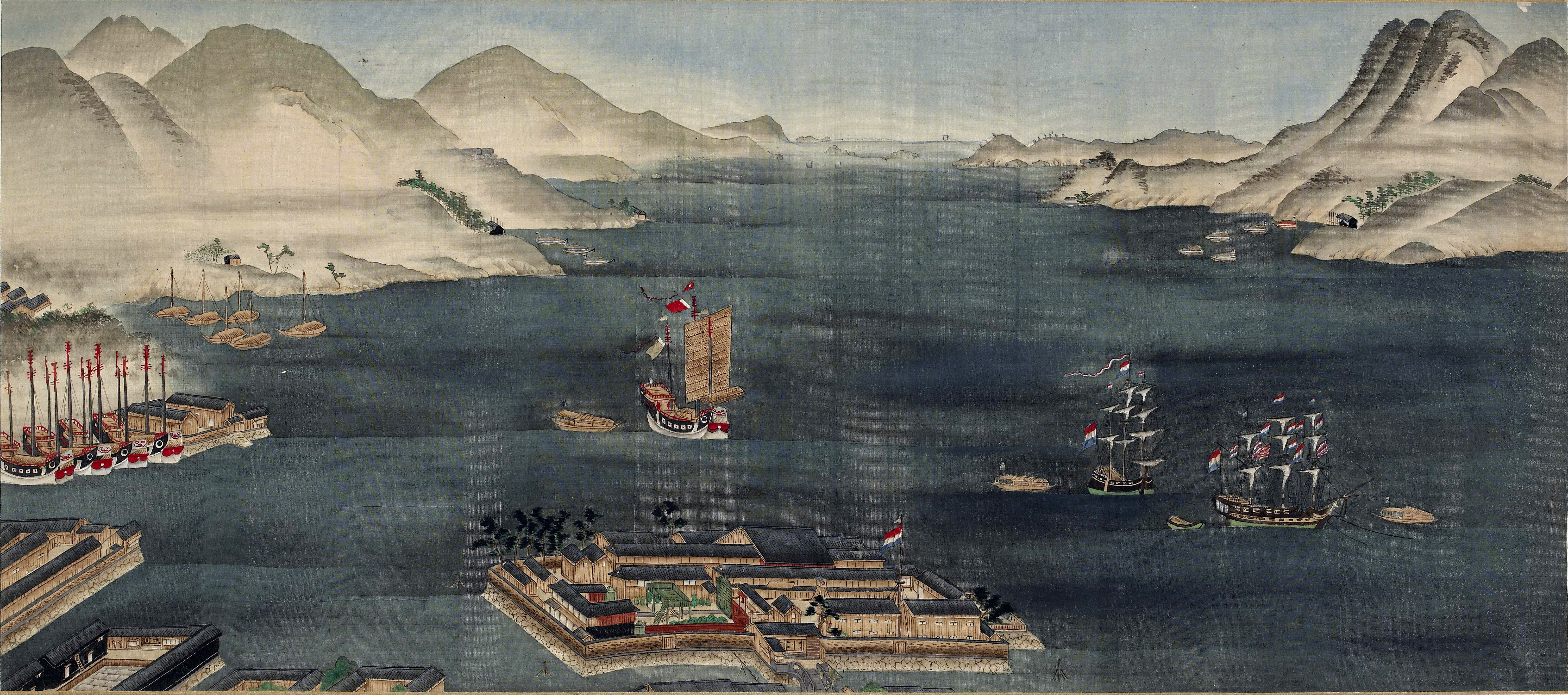A couple weeks ago, Nana and I spent a weekend in Nagasaki, which is a short two-hour train ride from Hakata Station here in Fukuoka.
Ever since August 9, 1945, this beautiful and cosmopolitan little city has lived in the shadow of a mushroom cloud. Nana will comment later on our heart-rending trip to the site of the atomic bombing and to the memorial museum nearby - but I'd like to start further back in Nagasaki's history, when the city was one of the great cities of Japan, and the country's only gateway to the West.
Before I start, though, I'll have to apologize in advance: there's simply no way to tell this story briefly and still tell it well.
Nagasaki as we know is has its roots in the 16th century, when it was nothing more than a tiny fishing village before some Portuguese explorers had the good fortune to stumble upon Kyushu. The local daimyo, sensing an opportunity, build Nagasaki into a harbor suitable for Portuguese ships, hoping to make himself and his lands rich off of foreign trade.
It worked: Nagasaki boomed, attracting Chinese merchants as well as Portuguese traders and missionaries. Foreign goods and ideas began pouring in through this western gate to Kyushu, and the locals began converting to Christianity in droves. (Even today, Kyushu remains the most Christian part of Japan, and one of the few places you can find an old church.) In the process, the Portuguese brought with them a surprising number of things considered traditionally Japanese, such as tempura (battered, fried heaven-on-earth - the word literally has the Chinese character for "heaven" in it) and some traditional Japanese sweets, along with a few loan words like pan (bread, or basically anything that comes from a self-styled bakery).
 |
| Thank you, Portugal! |
Change came a little too quickly for the shogun, though. Catholicism was a particular sticking point: although Christian warlords from Kyushu played an important role in unifying Japan under the Tokugawa clan, the Tokugawa rulers, like many potentates before and since, began to suspect that their Christian subjects were getting a bit too fond of the Pope. In the 1630's, the shogun shut off all contact with the West - seriously, foreigners could be executed just for setting foot on Japanese soil - and kicked the Portuguese out of Nagasaki.
 |
| The 26 Martyrs of Nagasaki, being martyrs, were in for a slightly more hellish fate. |
But this wasn't the end of Nagasaki's flirtation with the West - far from it. The shogun, as it turns out, wanted to have his cake and eat it, too: he didn't want those rabble-rousing Catholics anywhere about the place, but he also didn't want to lose the fortune to be made by monopolizing trade in Chinese and Western goods, so he swapped the Portuguese out for some nice, protestant Dutch - then promptly confined them to an artificial island no bigger than most American high schools.
 |
| Pictured: A complete lack of personal space. |
Today, a re-built Dejima that still features a handful of original buildings serves as an open-air museum of Nagasaki's peculiar Dutch past.
The moment we stepped inside the gates, Nana and I were instantly entranced with the place. The roots of globalization go back a lot farther than we realize, and a place like Dejima really brings those roots to the fore. I think we also saw some kindred spirits in those old Dutch merchants who packed up their lives and shipped off for the unknown East. What must it have been like, sailing for the first time into Nagasaki harbor - which is less a harbor than a sub-tropical fjord - and catching sight of that cramped little island where you knew you would be spending the next year or more of your life? What must it have been like to catch the sounds and the smells of the mainland just over the water, knowing you would die without ever setting foot there yourself? And that if you somehow managed to set foot on the other side, your life would get a lot shorter, fast?
 |
| On the plus side, there was plenty of time for poking dogs with incredibly thin sticks. |
Dejima today is simply crammed with such tantalizing details. Imagine the Japanese-born translators, almost the only Japanese men allowed to pass freely between Dejima and the mainland: within a generation, they became the leading lights of Western science and scholarship in Japan. Imagine the Dutch merchant and lexicographer Hendrik Doeff, who wrote a Japanese-Dutch-English dictionary - that is, during his spare time, when he wasn't busy brewing the first beer in Japan. Then, of course, imagine the oiran (courtesans), predecessors to the better-known geisha, who were the only women allowed on Dejima, given that the Dutch were not welcome to bring their wives and children along.
 |
| These fellows seem to be enduring admirably. |
With late summer would come the Dutch trading ships, the highlight of the year in Nagasaki. In spring, then, a delegation from Dejima would set out on an 800-mile journy to Edo (modern-day Tokyo) to pay respects to the shogun. Though the Dutch travelled under strict guard, the leading scholars of the day always managed to find places at the right inns along the way, while the regular folks packed the streets trying to get a glimpse of these pale strangers.
To this day, dozens of local festivals along the old road mark the traditional date of the Dutch procession's passing.
In summer, then, safely at home, the head of the Dutch merchants would spend his last few weeks on Dejima dancing in a European house with tatami (straw-mat) floors, whose walls were covered with printed origami paper, and whose sun-room looked out over the harbor through the only glass windows anywhere in Japan.
 |
| That's a sadly tiny picture of some Dutch guys playing snooker . . . on tatami. Tatami, I say! Mostly because I like saying tatami. |
Anyway, if you see one thing in Nagasaki (after you visit the atomic bombing site, of course), make it Dejima - that little island alone would have been well worth the trip.
(Bonus: The Dejima gift shop has a nice little illustrated book, in English, that hits all the highlights of the exhibit, with some excellent images to boot.)



I have a deep interest in Japanese culture and your blog is the best platform to enrich myself. I am absolutely hooked to your informative writings. Wishes to both of you.
ReplyDelete